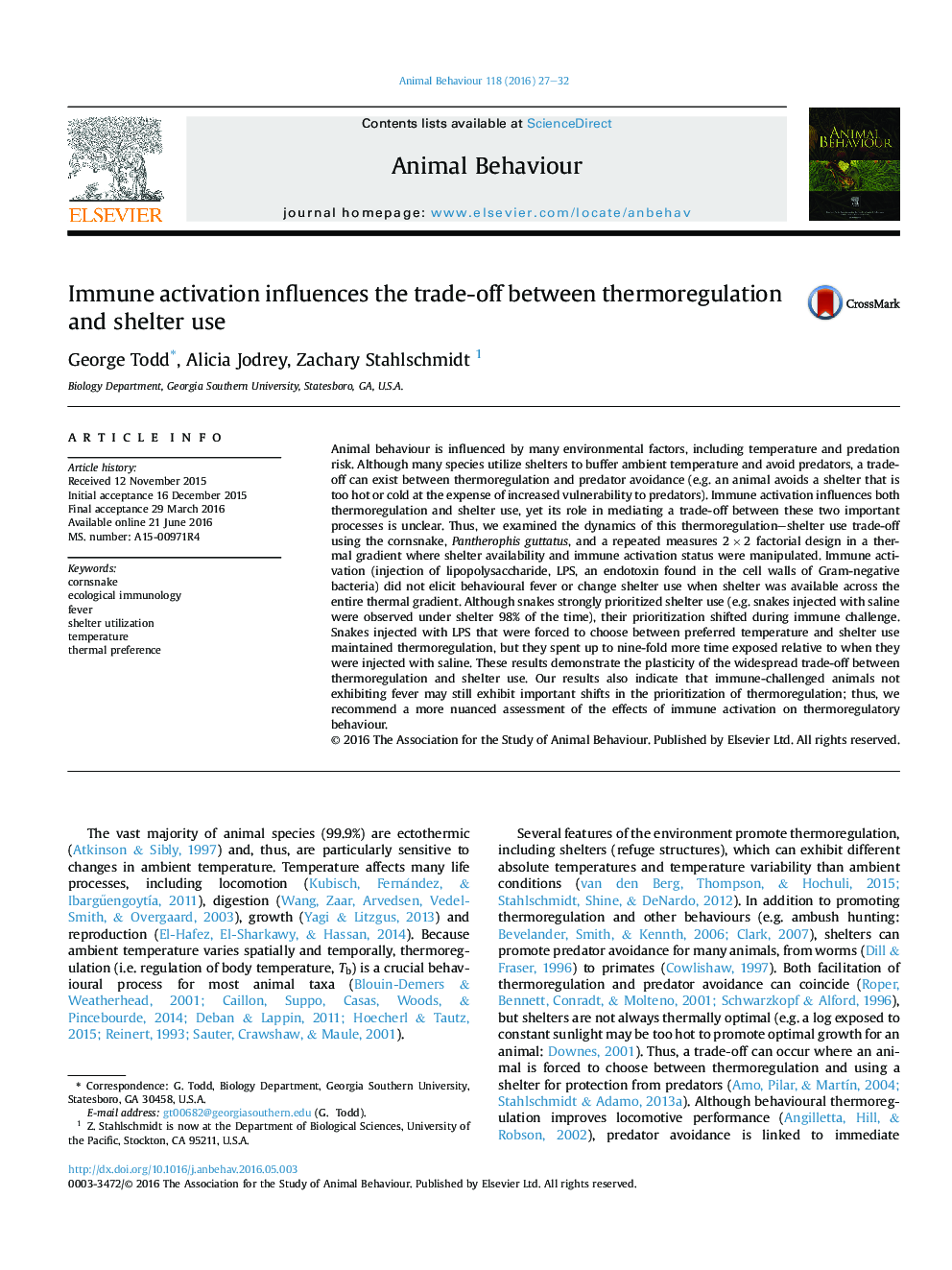| Article ID | Journal | Published Year | Pages | File Type |
|---|---|---|---|---|
| 2416234 | Animal Behaviour | 2016 | 6 Pages |
•Predator avoidance and thermoregulation are important, but they may conflict.•We examined effects of immune challenge on thermoregulation–shelter use trade-off in cornsnakes.•Snakes typically prioritized predator avoidance over thermoregulation.•Yet, predator avoidance became deprioritized during immune activation.•Animals that do not display fever can still exhibit this shift in prioritization.
Animal behaviour is influenced by many environmental factors, including temperature and predation risk. Although many species utilize shelters to buffer ambient temperature and avoid predators, a trade-off can exist between thermoregulation and predator avoidance (e.g. an animal avoids a shelter that is too hot or cold at the expense of increased vulnerability to predators). Immune activation influences both thermoregulation and shelter use, yet its role in mediating a trade-off between these two important processes is unclear. Thus, we examined the dynamics of this thermoregulation–shelter use trade-off using the cornsnake, Pantherophis guttatus, and a repeated measures 2 × 2 factorial design in a thermal gradient where shelter availability and immune activation status were manipulated. Immune activation (injection of lipopolysaccharide, LPS, an endotoxin found in the cell walls of Gram-negative bacteria) did not elicit behavioural fever or change shelter use when shelter was available across the entire thermal gradient. Although snakes strongly prioritized shelter use (e.g. snakes injected with saline were observed under shelter 98% of the time), their prioritization shifted during immune challenge. Snakes injected with LPS that were forced to choose between preferred temperature and shelter use maintained thermoregulation, but they spent up to nine-fold more time exposed relative to when they were injected with saline. These results demonstrate the plasticity of the widespread trade-off between thermoregulation and shelter use. Our results also indicate that immune-challenged animals not exhibiting fever may still exhibit important shifts in the prioritization of thermoregulation; thus, we recommend a more nuanced assessment of the effects of immune activation on thermoregulatory behaviour.
